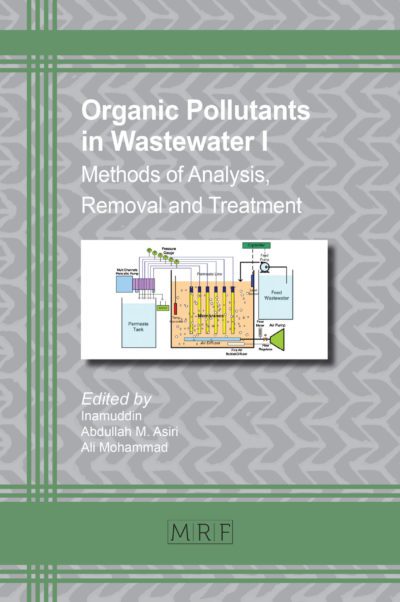Carbon quantum dots enhanced high valence matel oxidation for decontamination
YUNPENG Wang, SHAOBIN Wang
Abstract. Fe(VI) demonstrates remarkable versatility in water purification, with ongoing efforts to enhance its efficacy in removing pollutants. Recent investigations have revealed that, alongside intermediate iron species [Fe(IV)/Fe(V)], direct electron transfer (DET) plays a pivotal role in organic pollutant degradation within the Fe(VI)/carbon quantum dots (CQDs) system. Initially, 30 μM of Fe(VI) oxidized approximately 52% of phenol. Upon introduction of CQDs (4 mg/L), the oxidation rates increased significantly to 87%. CQDs not only mitigated the adverse effects of solution pH on Fe(VI) pollutant abatement but also acted as catalysts, facilitating DET from organic pollutants to Fe(VI). Notably, DET mediated by CQDs proved to be a more efficient means of utilizing Fe(VI)’s oxidation potential compared to iron species oxidation alone. This DET mechanism offers a promising avenue for enhancing pollution control capabilities of Fe(VI).
Keywords
Oxidation, Ferrate, Carbon Quantum Dots, Decontamination
Published online 4/25/2025, 5 pages
Copyright © 2025 by the author(s)
Published under license by Materials Research Forum LLC., Millersville PA, USA
Citation: YUNPENG Wang, SHAOBIN Wang, Carbon quantum dots enhanced high valence matel oxidation for decontamination, Materials Research Proceedings, Vol. 53, pp 637-641, 2025
DOI: https://doi.org/10.21741/9781644903575-64
The article was published as article 64 of the book Decarbonization Technology
![]() Content from this work may be used under the terms of the Creative Commons Attribution 3.0 license. Any further distribution of this work must maintain attribution to the author(s) and the title of the work, journal citation and DOI.
Content from this work may be used under the terms of the Creative Commons Attribution 3.0 license. Any further distribution of this work must maintain attribution to the author(s) and the title of the work, journal citation and DOI.
References
[1] Ekins, P.; Zenghelis, D., (2021). The costs and benefits of environmental sustainability, Sustain Sci, 16, 3, 949-965. https://doi.org/10.1007/s11625-021-00910-5
[2] Deng, Y.; Zhao, R., (2015). Advanced Oxidation Processes (AOPs) in Wastewater Treatment, Current Pollution Reports, 1, 3, 167-176. https://doi.org/10.1007/s40726-015-0015-z
[3] Liu, Y.; Wang, L.; Wang, X.; Huang, Z.; Xu, C.; Yang, T.; Zhao, X.; Qi, J.; Ma, J., (2017). Highly efficient removal of trace thallium from contaminated source waters with ferrate: Role of in situ formed ferric nanoparticle, Water Res, 124, 149-157. https://doi.org/10.1016/j.watres.2017.07.051
[4] Sharma, V. K.; Feng, M.; Dionysiou, D. D.; Zhou, H. C.; Jinadatha, C.; Manoli, K.; Smith, M. F.; Luque, R.; Ma, X.; Huang, C. H., (2022). Reactive High-Valent Iron Intermediates in Enhancing Treatment of Water by Ferrate, Environ Sci Technol, 56, 1, 30-47. https://doi.org/10.1021/acs.est.1c04616
[5] Wang, Y. P.; Liu, Y. L.; Tian, S. Q.; Yang, J. J.; Wang, L.; Ma, J., (2021). Straw biochar enhanced removal of heavy metal by ferrate, J Hazard Mater, 416, 126-128. https://doi.org/10.1016/j.jhazmat.2021.126128
[6] Liu, Y.; Chen, C.; Duan, X.; Wang, S.; Wang, Y., (2021). Carbocatalytic ozonation toward advanced water purification, Journal of Materials Chemistry A, 9, 35, 18994-19024. https://doi.org/10.1039/D1TA02953C
[7] Khan, M. E.; Mohammad, A.; Yoon, T., (2022). State-of-the-art developments in carbon quantum dots (CQDs): Photo-catalysis, bio-imaging, and bio-sensing applications. Chemosphere, 302, 134815. https://doi.org/10.1016/j.chemosphere.2022.134815
[8] Shao, B.; Dong, H.; Sun, B.; Guan, X., (2019). Role of Ferrate(IV) and Ferrate(V) in Activating Ferrate(VI) by Calcium Sulfite for Enhanced Oxidation of Organic Contaminants, Environ Sci Technol, 53, 2, 894-902. https://doi.org/10.1021/acs.est.8b04990
[9] Yang, T.; Mai, J.; Cheng, H.; Zhu, M.; Wu, S.; Tang, L.; Liang, P.; Jia, J.; Ma, J., (2022). UVA-LED-Assisted Activation of the Ferrate(VI) Process for Enhanced Micropollutant Degradation: Important Role of Ferrate(IV) and Ferrate(V), Environ Sci Technol, 56, 2, 1221-1232. https://doi.org/10.1021/acs.est.1c03725
[10] Pan, B.; Feng, M.; McDonald, T. J.; Manoli, K.; Wang, C.; Huang, C.-H.; Sharma, V. K., (2020). Enhanced ferrate(VI) oxidation of micropollutants in water by carbonaceous materials: Elucidating surface functionality. Chemical Engineering Journal, 398, 125607. https://doi.org/10.1016/j.cej.2020.125607
[11] Sun, S.; Jiang, J.; Qiu, L.; Pang, S.; Li, J.; Liu, C.; Wang, L.; Xue, M.; Ma, J., (2019). Activation of ferrate by carbon nanotube for enhanced degradation of bromophenols: Kinetics, products, and involvement of Fe(V)/Fe(IV). Water Res, 156, 1-8. https://doi.org/10.1016/j.watres.2019.02.057












